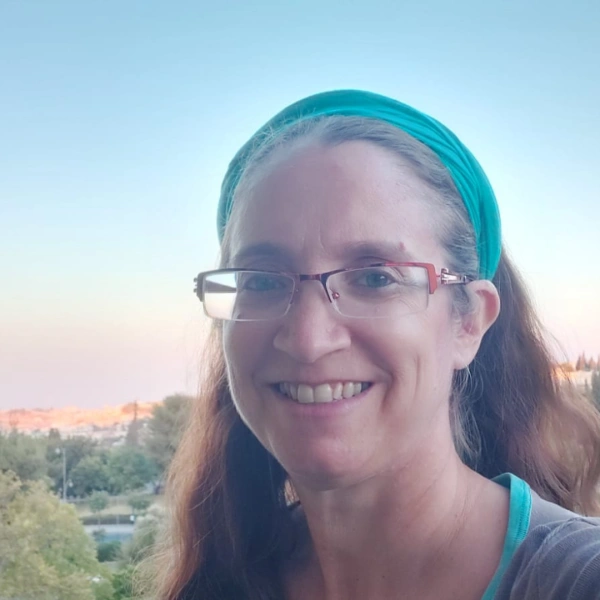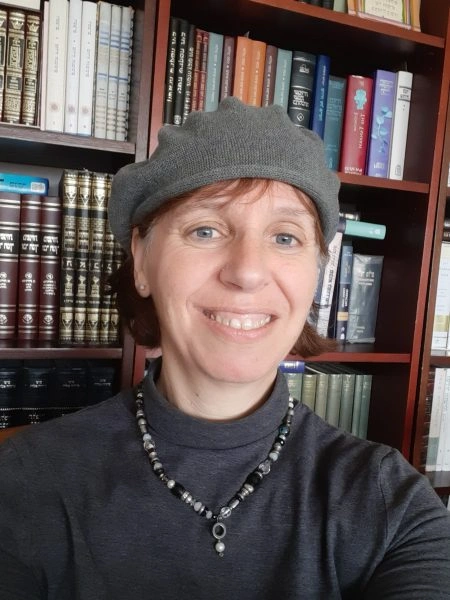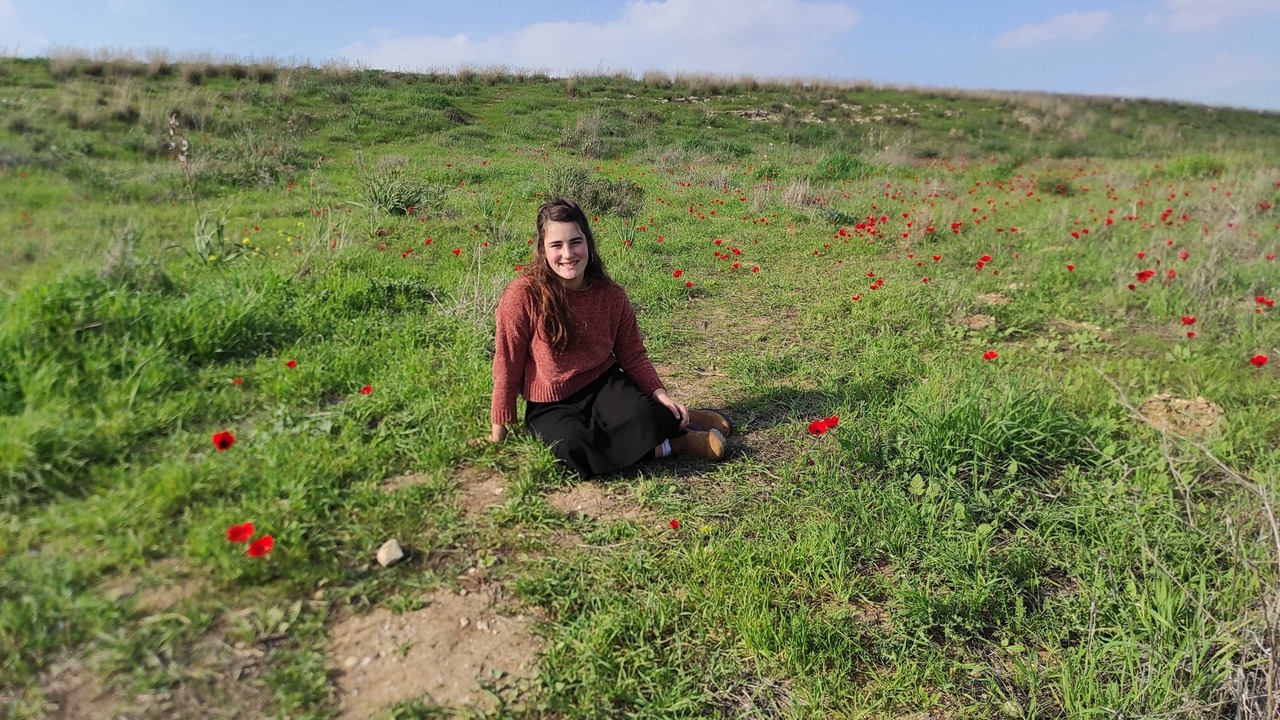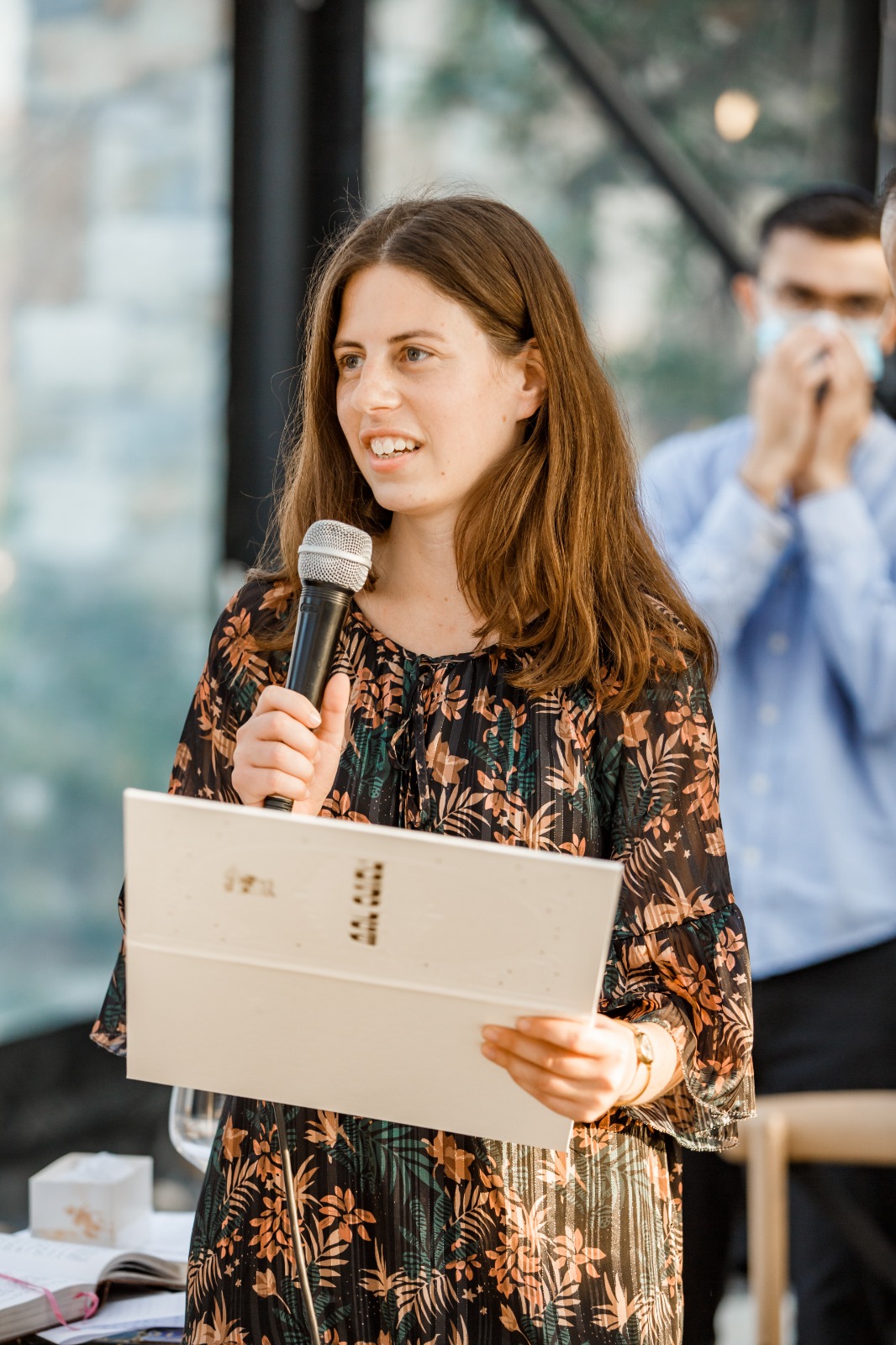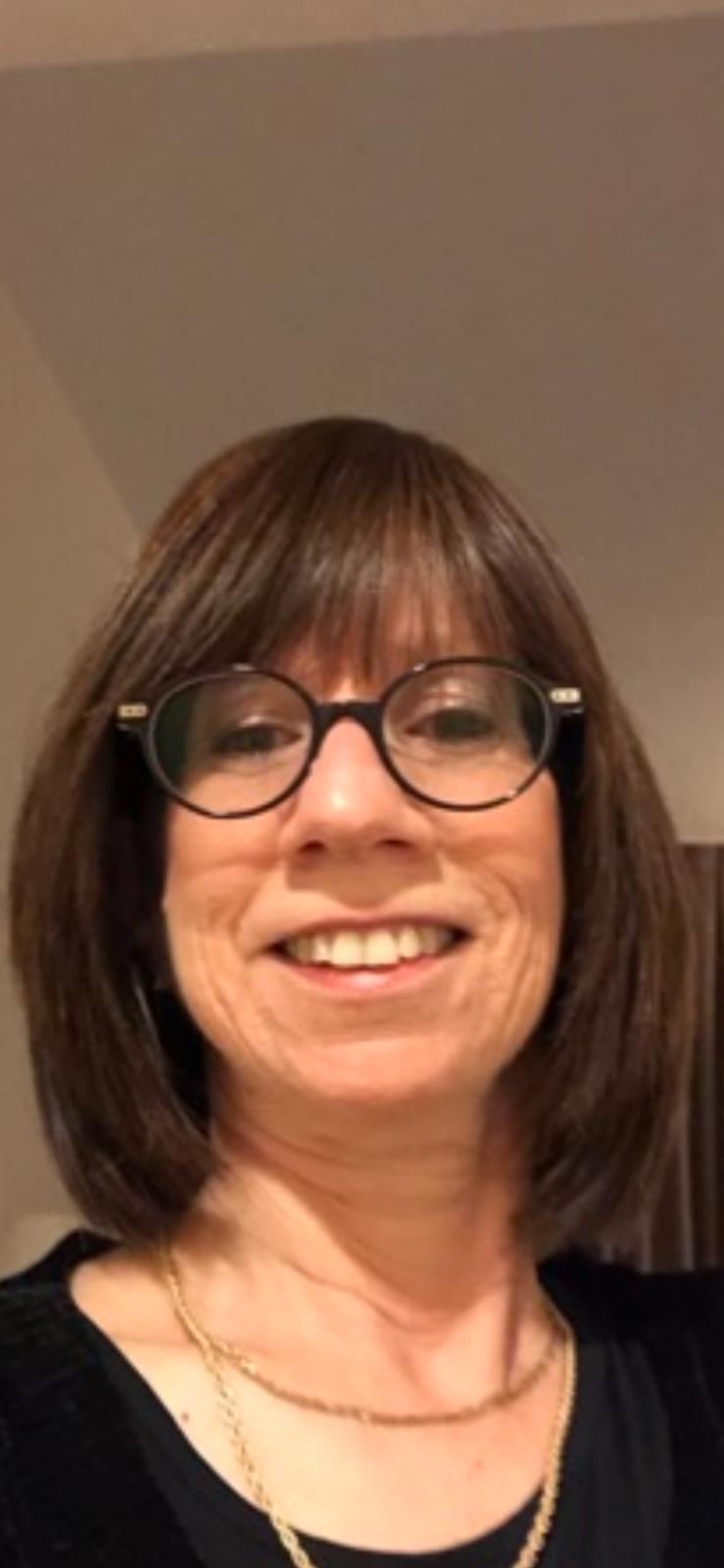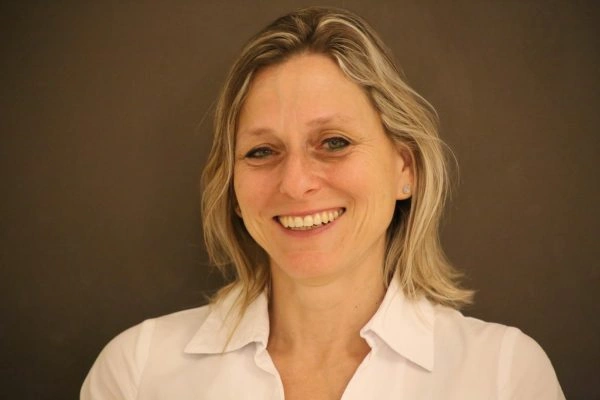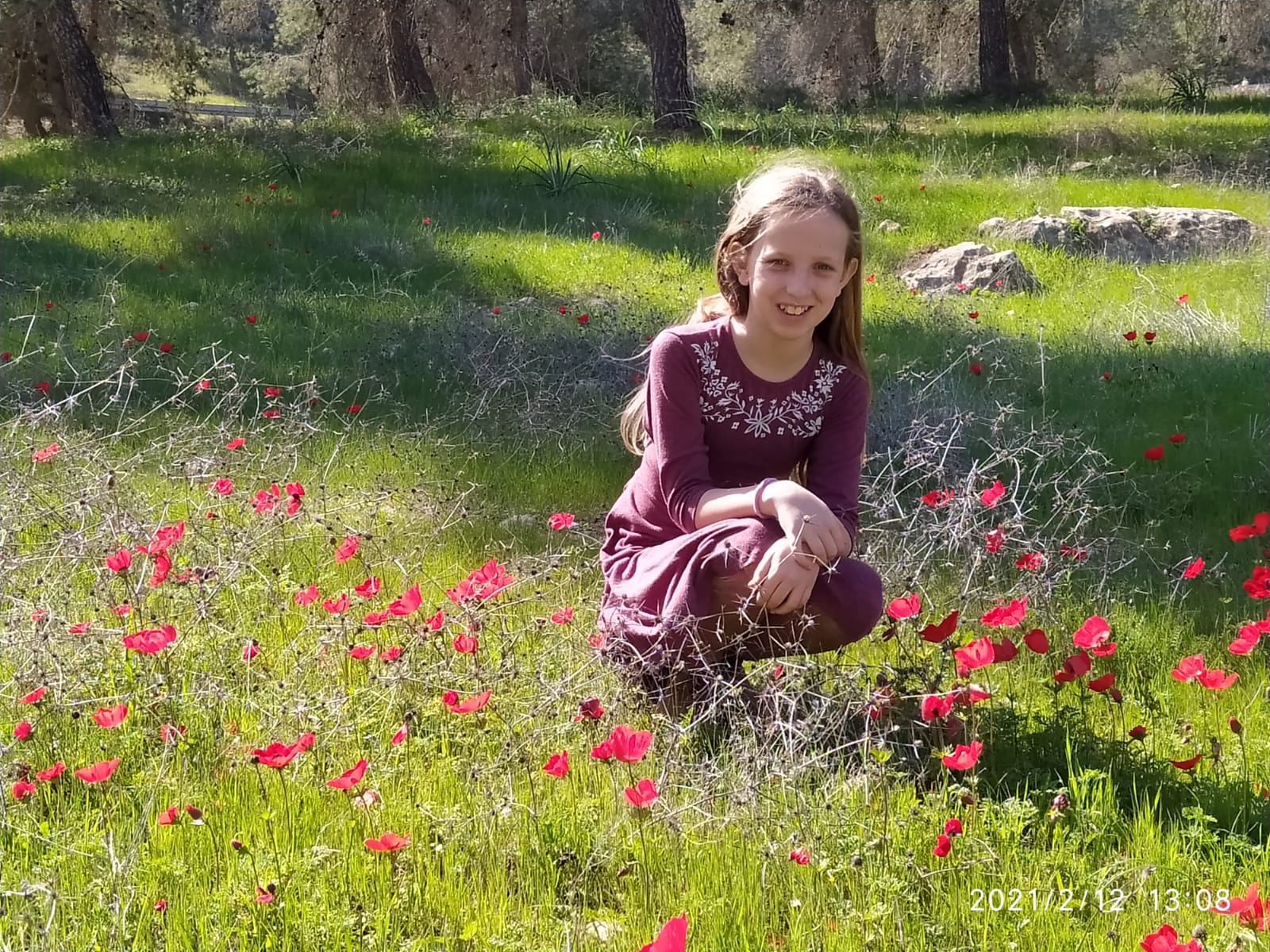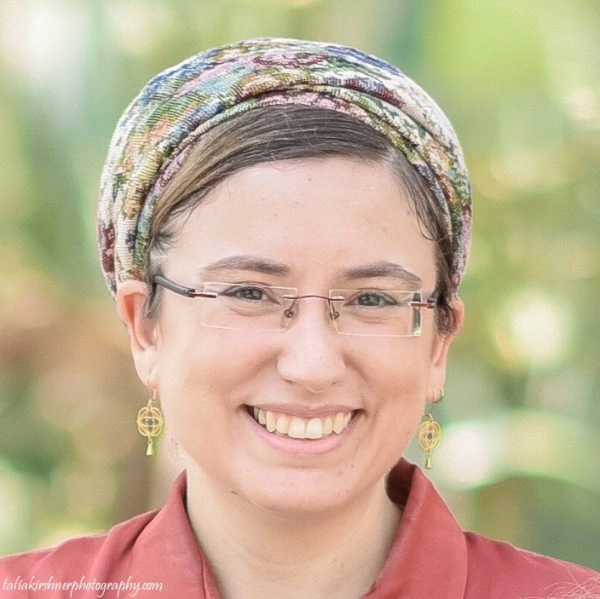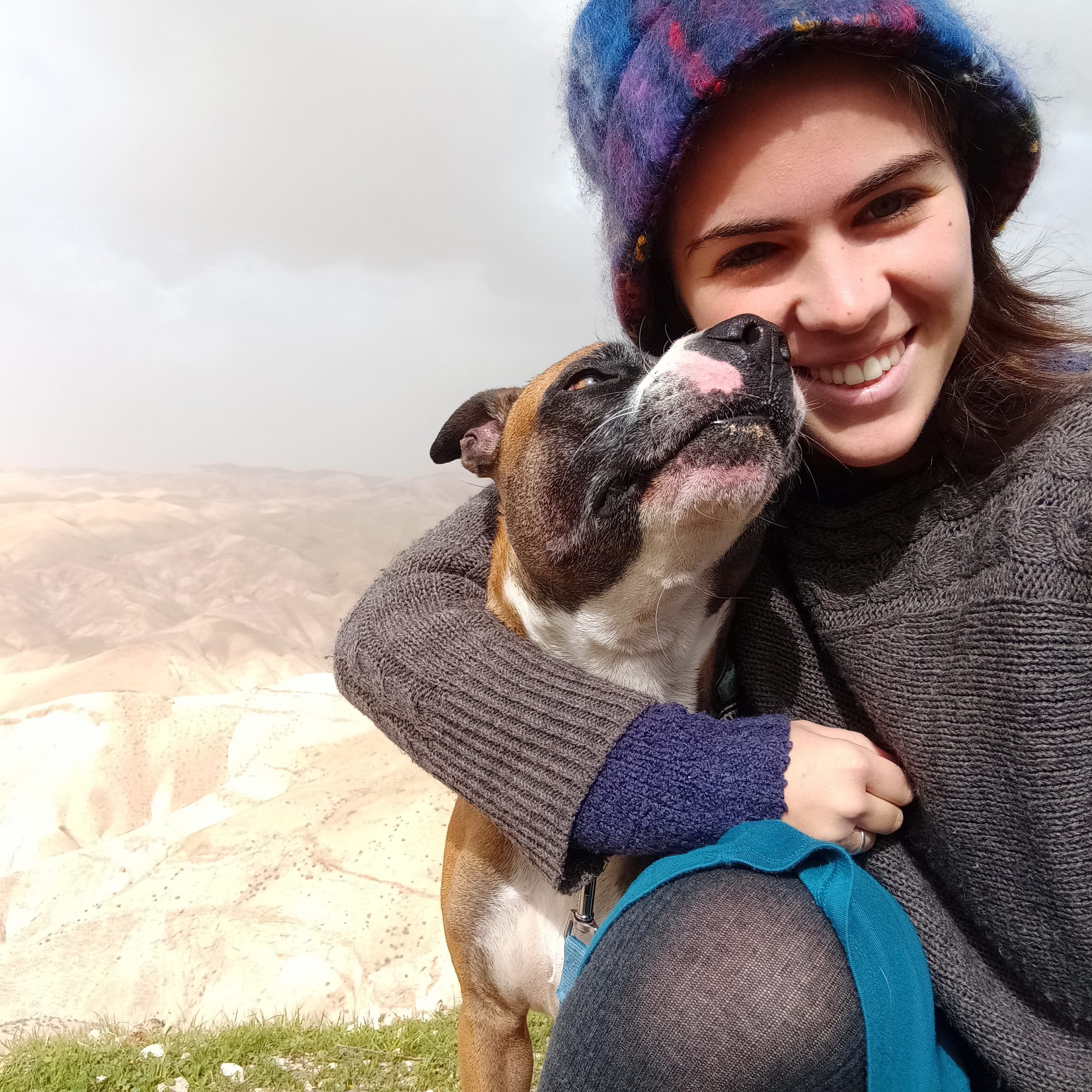יומא מג
דְּאַפֵּיק חֲמוֹר בַּהֲדַהּ.
where one took out a donkey with it. According to the first tanna, this would be permitted, since there is no concern that people would think that the wrong cow or cows were slaughtered. However, according to Rabbi Yehuda HaNasi, who maintains that this rationale is irrelevant, even this case would be excluded by the word “it.”
״וְשָׁחַט אוֹתָהּ״ — שֶׁלֹּא יִשְׁחוֹט אַחֶרֶת עִמָּהּ. ״לְפָנָיו״, לְרַב — שֶׁלֹּא יַסִּיחַ דַּעְתּוֹ מִמֶּנָּה, לִשְׁמוּאֵל — שֶׁיְּהֵא זָר שׁוֹחֵט וְאֶלְעָזָר רוֹאֶה.
The Gemara expounds the next phrase in the verse: “And he shall slaughter it,” means that “it,” the red heifer, should be slaughtered and that no other should be slaughtered with it. And the next phrase: “Before him”; according to Rav, it means that he should not divert his attention from it. According to Shmuel, it indicates that a non-priest can slaughter it and Elazar the priest observes.
״וְלָקַח אֶלְעָזָר הַכֹּהֵן מִדָּמָהּ בְּאֶצְבָּעוֹ״, לִשְׁמוּאֵל — לְאַהֲדוֹרֵיהּ לְאֶלְעָזָר. לְרַב — הָוֵי מִיעוּט אַחַר מִיעוּט, וְאֵין מִיעוּט אַחַר מִיעוּט אֶלָּא לְרַבּוֹת, דַּאֲפִילּוּ כֹּהֵן הֶדְיוֹט.
The Gemara proceeds to expound the next verse: “And Elazar the priest shall take some of its blood with his finger” (Numbers 19:4). What is indicated by specifying Elazar? According to Shmuel, since the phrase “before him” in the previous verse indicates that Elazar himself did not need to slaughter the red heifer but that rather a non-priest could, it is necessary in this stage to return it to Elazar, to indicate that he must himself take the blood with his finger. According to Rav, this is an example of a restrictive expression following a restrictive expression, as both verses indicate that the rite may be performed only by a priest. And there is a hermeneutical principle that a restrictive expression following a restrictive expression comes only to amplify the halakha and include additional cases. In this case, it serves to teach that even a common priest may perform the rite.
״וְלָקַח הַכֹּהֵן עֵץ אֶרֶז וְאֵזוֹב וּשְׁנִי תוֹלָעַת״, לִשְׁמוּאֵל — דַּאֲפִילּוּ בְּכֹהֵן הֶדְיוֹט. לְרַב — אִצְטְרִיךְ, סָלְקָא דַּעְתָּךְ אָמֵינָא: כֵּיוָן דְּלָאו גּוּפַהּ דְּפָרָה נִינְהוּ, לָא לִיבְעֵי כֹּהֵן, קָא מַשְׁמַע לַן.
The Gemara expounds another verse in the same passage: “And the priest shall take cedar wood, and hyssop, and a strip of crimson” (Numbers 19:6). What is indicated by specifying that this is done by the priest? According to Shmuel, who holds that in the previous stage the verse stated: “And Elazar the priest” to indicate that Elazar, i.e., a deputy High Priest, was required to perform that stage, the use of the term “the priest” in this stage indicates that a deputy High Priest is no longer required for this stage; rather, even a common priest may perform this stage. According to Rav, who holds that even in the previous stage a common priest may perform the rite, the term “and the priest” is necessary here, as it could enter your mind to say that since these stages do not involve the heifer itself, they do not require a priest at all. Therefore, the verse teaches us that this is not correct.
״וְכִבֶּס בְּגָדָיו הַכֹּהֵן״ — בְּכִיהוּנּוֹ. ״וְטָמֵא הַכֹּהֵן עַד הָעָרֶב״ — כֹּהֵן בְּכִיהוּנּוֹ לְדוֹרוֹת.
The Gemara expounds the next verse: “Then the priest shall wash his clothes” (Numbers 19:7). Why is there a need to restate the involvement of the priest? To teach that he should be in his priestly state, i.e., wearing his priestly garments and fit for service. In the next phrase of the verse, the involvement of the priest is restated: “And the priest shall be impure until evening” (Numbers 19:7). This repetition is to teach that even in future generations the rite is to be performed only by a priest in his priestly state.
הָנִיחָא לְמַאן דְּאָמַר לְדוֹרוֹת בְּכֹהֵן הֶדְיוֹט — שַׁפִּיר, אֶלָּא לְמַאן דְּאָמַר לְדוֹרוֹת בְּכֹהֵן גָּדוֹל, הַשְׁתָּא כֹּהֵן גָּדוֹל בָּעֵינַן, בְּכִיהוּנּוֹ מִיבַּעְיָא?! אִין, מִילְּתָא דְּאָתְיָא בְּקַל וְחוֹמֶר — טָרַח וְכָתַב לַהּ קְרָא.
The Gemara analyzes this derivation according to the two sides of the dispute the Gemara cited previously: It works out well according to the one who said that for future generations the rite of the red heifer may be performed by a common priest. It is therefore understandable that the verse emphasizes that the priest has to perform the rite in his priestly state. But according to the one who said that for future generations it must be performed by a High Priest, now that we require the High Priest, is it necessary to mention that he must be in his priestly state? Yes, sometimes there is a matter that could be derived by means of an a fortiori inference, and the verse nevertheless unnecessarily writes it explicitly.
״וְאָסַף אִישׁ טָהוֹר אֵת אֵפֶר הַפָּרָה וְהִנִּיחַ״. ״אִישׁ״ — לְהַכְשִׁיר אֶת הַזָּר, ״טָהוֹר״ — לְהַכְשִׁיר אֶת הָאִשָּׁה, ״וְהִנִּיחַ״ — מִי שֶׁיֵּשׁ בּוֹ דַּעַת לְהַנִּיחַ, יָצְאוּ חֵרֵשׁ שׁוֹטֶה וְקָטָן שֶׁאֵין בָּהֶן דַּעַת לְהַנִּיחַ.
The Gemara expounds another verse in the passage: “And a man who is pure shall gather up the ashes of the heifer and place them” (Numbers 19:9). The verse states “a man” to qualify a non-priest to perform this stage of the rite. The verse states “pure” to qualify even a woman to perform this stage. The verse states “and place” to indicate that only one who has the basic level of intelligence to be able to intentionally place the ashes in their place is qualified to do so, thereby excluding a deaf-mute, an imbecile, and a minor, since they do not have the basic level of intelligence to be able to intentionally place the ashes in their place.
תְּנַן הָתָם: הַכֹּל כְּשֵׁרִין לְקַדֵּשׁ, חוּץ מֵחֵרֵשׁ שׁוֹטֶה וְקָטָן. רַבִּי יְהוּדָה מַכְשִׁיר בְּקָטָן, וּפוֹסֵל בְּאִשָּׁה וּבְאַנְדְּרוֹגִינוֹס.
The Gemara prefaces its exposition of another verse in the passage, which details the sanctification of the ashes of the red heifer, by citing a dispute concerning that stage: We learned in a mishna there, in tractate Para: Everyone is qualified to sanctify the ashes of the red heifer, i.e., to pour the water over them, except for a deaf-mute, an imbecile, and a minor. Rabbi Yehuda qualifies a minor, but disqualifies a woman and a hermaphrodite.
מַאי טַעְמָא דְּרַבָּנַן — דִּכְתִיב: ״וְלָקְחוּ לַטָּמֵא מֵעֲפַר שְׂרֵיפַת הַחַטָּאת״. הָנָךְ דִּפְסַלִי לָךְ בַּאֲסִיפָה — פְּסַלִי לָךְ בְּקִידּוּשׁ, וְהָנָךְ דְּאַכְשַׁרִי לָךְ בַּאֲסִיפָה — אַכְשַׁרִי לָךְ בְּקִידּוּשׁ.
What is the reason of the Rabbis, i.e., the first tanna? As it is written: “And they shall take for the impure of the ashes of the burning of the purification from sin, and he shall put running water thereto in a vessel” (Numbers 19:17). The word “they” is understood as referring to those who perform the previous stage of gathering the ashes. The verse therefore indicates: Those whom I disqualified for you for gathering the ashes, I have disqualified for you also for sanctification; and those whom I have qualified for you for gathering the ashes, I have qualified for you for sanctification.
וְרַבִּי יְהוּדָה: אִם כֵּן לֵימָא קְרָא ״וְלָקַח״, מַאי ״וְלָקְחוּ״ — דַּאֲפִילּוּ קָטָן דִּפְסַלִי לָךְ הָתָם, הָכָא — כָּשֵׁר.
And why does Rabbi Yehuda not accept this reasoning? If so, let the verse say: And he shall take. What is the meaning of “and they shall take”? The use of the plural serves to qualify additional people who were excluded from the previous stage. It means that with regard to even a minor, who I disqualified there with regard to collecting the ash, here, with regard to sanctification, he is qualified.
אִשָּׁה מְנָא לֵיהּ? ״וְנָתַן״, וְלֹא ״וְנָתְנָה״. וְרַבָּנַן: אִי כְּתַב רַחֲמָנָא: ״וְלָקַח … וְנָתַן״, הֲוָה אָמֵינָא: עַד דְּשָׁקֵיל חַד וְיָהֵיב חַד, כְּתַב רַחֲמָנָא: ״וְלָקְחוּ״.
From where does Rabbi Yehuda derive that a woman is unfit? The verse states “and he shall put” and not: And she shall put. How do the Rabbis interpret this verse? They assume that if the Merciful One had written: And he shall take…and he shall put, I would have said the rite is not valid unless one person takes and the same one puts the ashes in the water. Therefore, the Merciful One writes “and they shall take” to indicate that the taking and the putting need not necessarily be executed by the same individual.
וְאִי כְּתַב רַחֲמָנָא ״וְלָקְחוּ … וְנָתְנוּ״, הֲוָה אָמֵינָא: עַד דְּשָׁקְלִי תְּרֵי וְיָהֲבִי תְּרֵי, כְּתַב רַחֲמָנָא: ״וְלָקְחוּ … וְנָתַן״, דַּאֲפִילּוּ שָׁקְלִי תְּרֵי וְיָהֵיב חַד.
And if the Merciful One had written two plural forms such as: And they shall take…and they shall put, I would have said the rite is not valid unless two people take and two people put. Therefore, the Merciful One writes “and they shall take” and “and he shall put” (Numbers 19:17), to indicate that even if two take and one puts the rite is nevertheless valid.
״וְלָקַח אֵזוֹב וְטָבַל בַּמַּיִם אִישׁ טָהוֹר״, לְרַבָּנַן: אִישׁ וְלֹא אִשָּׁה. ״טָהוֹר״ — לְהַכְשִׁיר אֶת הַקָּטָן, וּלְרַבִּי יְהוּדָה: ״אִישׁ״ — וְלֹא קָטָן, ״טָהוֹר״ — לְהַכְשִׁיר אֶת הָאִשָּׁה.
The Gemara continues to expound the verses: “And a man who is pure shall take hyssop and dip it into the water” (Numbers 19:18). According to the Rabbis, who hold that the sanctification of the ashes in the previous stage may be performed by woman but not a minor, the word “man” indicates that for this stage, the taking and dipping of hyssop, only a man is qualified but not a woman, and the word “pure” is written to qualify even a minor for this stage. And according to Rabbi Yehuda, who holds the previous stage may be performed by a minor but not by a woman, the word man indicates that for this stage only an adult is qualified but not a minor, and the word pure is written to qualify even a woman for this stage.
מֵיתִיבִי: הַכֹּל כְּשֵׁרִין לְהַזּוֹת, חוּץ מִטּוּמְטוּם וְאַנְדְּרוֹגִינוֹס וְאִשָּׁה. וְקָטָן (שֶׁיֵּשׁ) בּוֹ דַּעַת, אִשָּׁה מְסַיַּעְתּוֹ וּמַזֶּה.
The Gemara raises an objection from a mishna in tractate Para: Everyone is qualified to sprinkle the purification waters, except for a person whose sexual organs are concealed [tumtum], and a hermaphrodite [androginus], and a woman. And concerning a minor who has a basic level of intelligence, a woman may assist him and he sprinkles the purification waters. The mishna disqualifies a woman for the sprinkling but qualifies a minor.
וְלָא פְּלִיג רַבִּי יְהוּדָה!
And Rabbi Yehuda does not disagree. The mishna implies that even he agrees with the mishna’s ruling.
אָמַר אַבָּיֵי: כֵּיוָן דְּאָמַר מָר ״מַשְׁמָע מוֹצִיא מִיַּד מַשְׁמָע וּמַשְׁמָע מִמֵּילָא״ — פְּלִיג.
Abaye said: Since the Master, i.e., Ulla, said: In some stages, the conditions implied by the phrasing of the verse precludes the application of conditions that are implied by a previous verse describing a previous stage, whereas in other stages, the conditions implied by the phrasing of the verse stand on their own and also apply in subsequent stages. Since it is clear from the opinion of the Rabbis that the verse describing the taking and dipping of hyssop is to be understood as indicating a change of conditions, perforce Rabbi Yehuda must also assume that there is a change in conditions, as explained above. Therefore, he certainly disagrees with the mishna’s ruling, even though his dissenting opinion is not recorded in the mishna.
״וְהִזָּה הַטָּהוֹר עַל הַטָּמֵא״. ״טָהוֹר״ מִכְּלָל שֶׁהוּא טָמֵא, לִימֵּד עַל טְבוּל יוֹם שֶׁכָּשֵׁר בְּפָרָה.
The Gemara expounds the next verse: “And the pure one shall sprinkle upon the impure” (Numbers 19:19). The previous verse already states that the one who sprinkles must be ritually pure. This requirement is repeated here to make the following inference: He is pure, which by inference suggests that initially he was ritually impure and has now removed that impurity. This fact is significant only if the reference is to a person who has still not completed his purification process. As such, the repetition of the requirement that the one who sprinkles be pure teaches about one who immersed that day, that he is qualified to sprinkle the waters in the rite of the red heifer. This is one who was rendered ritually impure with a type of ritual impurity from which he will become fully ritually pure only upon nightfall.
אָמַר רַבִּי אַסִּי: כִּי הֲווֹ בַּהּ רַבִּי יוֹחָנָן וְרֵישׁ לָקִישׁ בְּפָרָה, לָא מַסְּקִי מִינַּהּ אֶלָּא כְּמַאי דְּמַסֵּיק תַּעֲלָא מִבֵּי כְרָבָא. אֶלָּא אָמְרִי: ״מַשְׁמָע מוֹצִיא מִיַּד מַשְׁמָע וּמַשְׁמָע מִמֵּילָא״.
Rabbi Asi said: When Rabbi Yoḥanan and Reish Lakish analyzed the passage of the red heifer to try to identify a consistent pattern in the way the implied conditions should be understood, i.e., when they exist to preclude conditions implied in previous stages, and when they imply conditions that remain in force in subsequent stages. They brought up from it only as the amount of earth that the fox brings up from a plowed field, meaning that they reached few conclusions. Rather, they said in conclusion that in some verses the conditions implied by the phrasing of the verse preclude the application of conditions that are implied by a previous verse; whereas in other verses, the conditions implied by the phrasing of the verse stand on their own and apply also in subsequent verses. However, there is no obvious pattern of how to determine which verse employs which style.
תָּנֵי תַּנָּא קַמֵּיהּ דְּרַבִּי יוֹחָנָן: כׇּל הַשְּׁחִיטוֹת כְּשֵׁירוֹת בְּזָר, חוּץ מִשֶּׁל פָּרָה. אֲמַר לֵיהּ רַבִּי יוֹחָנָן: פּוֹק תְּנִי לְבָרָא: לֹא מָצִינוּ שְׁחִיטָה בְּזָר פְּסוּלָה.
A tanna who would recite baraitot in the study hall recited a baraita before Rabbi Yoḥanan: All slaughterings are valid if performed by a non-priest, except that of the red heifer. Rabbi Yoḥanan said to him: Go out and teach that baraita outside the house of study, but not inside, as it is incorrect. We have not found any case of a slaughtering by a non-priest that is invalid.
וְרַבִּי יוֹחָנָן, לָא מִיבַּעְיָא לְתַנָּא דְּלָא צָיֵית, אֶלָּא אֲפִילּוּ לְרַבֵּיהּ לָא צָיֵית. דְּאָמַר רַבִּי יוֹחָנָן מִשּׁוּם רַבִּי שִׁמְעוֹן בֶּן יְהוֹצָדָק: שְׁחִיטַת פָּרָה בְּזָר — פְּסוּלָה. וַאֲנִי אוֹמֵר: כְּשֵׁירָה, לֹא מָצִינוּ שְׁחִיטָה שֶׁפְּסוּלָה בְּזָר.
The Gemara comments: And Rabbi Yoḥanan was very convinced of this. Needless to say that he did not listen to that tanna, but he did not even listen to his own teacher, who maintained the same opinion as cited by the tanna, as Rabbi Yoḥanan said in the name of Rabbi Shimon ben Yehotzadak: The slaughtering of the red heifer by a non-priest is invalid. Rabbi Yoḥanan added: And I say it is valid, for we have not found any case of a slaughtering by a non-priest that is invalid.
בָּא לוֹ אֵצֶל פָּרוֹ שְׁנִיָּה. מַאי שְׁנָא בְּוִידּוּי רִאשׁוֹן דְּלָא אָמַר: ״וּבְנֵי אַהֲרֹן עַם קְדוֹשֶׁךָ״, וּמַאי שְׁנָא בְּוִידּוּי שֵׁנִי דְּאָמַר: ״וּבְנֵי אַהֲרֹן עַם קְדוֹשֶׁךָ״?
The mishna states: The High Priest comes and stands next to his bull a second time and confesses: Please God, I have sinned…I and my family and the children of Aaron, your sacred people. The Gemara asks: What is different about the first confession that he made over the bull, in which he did not say: And the children of Aaron, your sacred people, and what is different about the second confession in which he said: And the children of Aaron, your sacred people?
תָּנָא דְּבֵי רַבִּי יִשְׁמָעֵאל, כָּךְ הִיא מִדַּת הַדִּין נוֹתֶנֶת: מוּטָב יָבֹא זַכַּאי וִיכַפֵּר עַל הַחַיָּיב, וְאַל יָבֹא חַיָּיב וִיכַפֵּר עַל הַחַיָּיב.
The school of Rabbi Yishmael taught: That is the method to which the attribute of justice lends itself: Better that an innocent person should come and gain atonement on behalf of the guilty, and a guilty person should not come and gain atonement on behalf of another guilty person. At the first confession, the High Priest has still not achieved atonement for himself. Therefore, it is more appropriate for him to wait until the second confession to seek atonement for the priesthood.
מַתְנִי׳ שְׁחָטוֹ וְקִבֵּל בְּמִזְרָק אֶת דָּמוֹ, וְנוֹתְנוֹ לְמִי שֶׁהוּא מְמָרֵס בּוֹ עַל הָרוֹבֶד הָרְבִיעִי שֶׁבַּהֵיכָל, כְּדֵי שֶׁלֹּא יִקְרוֹשׁ. נָטַל מַחְתָּה וְעָלָה לְרֹאשׁ הַמִּזְבֵּחַ, וּפִנָּה גֶּחָלִים אֵילָךְ וְאֵילָךְ, וְחוֹתֶה מִן הַמְעוּכָּלוֹת הַפְּנִימִיּוֹת, וְיָרַד וְהִנִּיחָהּ עַל הָרוֹבֶד הָרְבִיעִי שֶׁבָּעֲזָרָה.
MISHNA: The High Priest would slaughter the bull and receive its blood in a bowl, and give it to the one who stirs it. The stirrer would stand on the fourth row of tiles in the Sanctuary and stir the blood lest it coagulate while the High Priest sacrificed the incense. He would take a coal pan and ascend to the top of the altar and clear the upper layer of coals to this side and to that side and with the coal pan scoop up coals from among the inner, consumed coals. And he would then descend and place the coal pan with the coals on the fourth row of tiles in the Temple courtyard.
בְּכׇל יוֹם הָיָה חוֹתֶה בְּשֶׁל כֶּסֶף וּמְעָרֶה בְּתוֹךְ שֶׁל זָהָב, וְהַיּוֹם חוֹתֶה בְּשֶׁל זָהָב וּבָהּ הָיָה מַכְנִיס.
The mishna comments on some of the contrasts between the service and protocols followed on Yom Kippur and those followed throughout the rest of the year: On every other day, a priest would scoop up the coals with a coal pan made of silver and pour the coals from there into a coal pan of gold. But on this day, on Yom Kippur, the High Priest scoops up with a coal pan of gold, and with that coal pan he would bring the coals into the Holy of Holies.
בְּכׇל יוֹם חוֹתֶה בְּשֶׁל אַרְבַּעַת קַבִּין וּמְעָרֶה לְתוֹךְ שְׁלֹשֶׁת קַבִּין, וְהַיּוֹם חוֹתֶה בִּשְׁלֹשֶׁת קַבִּין וּבָהּ הָיָה מַכְנִיס. רַבִּי יוֹסֵי אוֹמֵר: בְּכׇל יוֹם חוֹתֶה בְּשֶׁל סְאָה וּמְעָרֶה בְּתוֹךְ שְׁלֹשֶׁת קַבִּין, וְהַיּוֹם חוֹתֶה בִּשְׁלֹשֶׁת קַבִּין וּבָהּ הָיָה מַכְנִיס.
On every other day, a priest scoops up the coals with a coal pan of four kav and pours the coals into a coal pan of three kav. But on this day, the High Priest scoops with one of three kav, and with it he would bring the coals into the Holy of Holies. Rabbi Yosei says a variation of this distinction: On every other day, a priest scoops up the coals with a coal pan of a se’a, which is six kav and then pours the coals into a coal pan of three kav. But on this day, the High Priest scoops with a coal pan of three kav, and with it he would bring the coals into the Holy of Holies.
בְּכׇל יוֹם הָיְתָה כְּבֵדָה, וְהַיּוֹם קַלָּה. בְּכׇל יוֹם הָיְתָה יָדָהּ קְצָרָה, וְהַיּוֹם אֲרוּכָּה. בְּכׇל יוֹם הָיְתָה זֶהָבָה יָרוֹק, וְהַיּוֹם אָדוֹם. דִּבְרֵי רַבִּי מְנַחֵם.
On every other day, the coal pan was heavy. But on this day it was light, so as not to tire the High Priest. On every other day, its handle was short, but on this day it was long so that he could also use his arm to support its weight. On every other day, it was of greenish gold, but on this day it was of a red gold. These are the statements of Rabbi Menaḥem.
בְּכׇל יוֹם מַקְרִיב פְּרָס בְּשַׁחֲרִית וּפְרָס בֵּין הָעַרְבַּיִם, וְהַיּוֹם מוֹסִיף מְלֹא חׇפְנָיו. בְּכׇל יוֹם הָיְתָה דַּקָּה, וְהַיּוֹם דַּקָּה מִן הַדַּקָּה.
On every other day, a priest sacrificed a peras, half a maneh, of incense in the morning, and a peras in the afternoon, but on this day the High Priest adds an additional handful of incense and burns it in the Holy of Holies. On every other day, the incense was ground fine as prescribed by the Torah, but on this day it was superfine.
בְּכׇל יוֹם כֹּהֲנִים עוֹלִין בְּמִזְרָחוֹ שֶׁל כֶּבֶשׁ וְיוֹרְדִין בְּמַעֲרָבוֹ, וְהַיּוֹם כֹּהֵן גָּדוֹל עוֹלֶה בָּאֶמְצַע וְיוֹרֵד בָּאֶמְצַע. רַבִּי יְהוּדָה אוֹמֵר: לְעוֹלָם כֹּהֵן גָּדוֹל עוֹלֶה בָּאֶמְצַע וְיוֹרֵד בָּאֶמְצַע.
On every other day, priests ascend on the eastern side of the ramp and descend on its western side, but on this day the High Priest ascends in the middle of the ramp and descends in the middle. Rabbi Yehuda says: There was no difference in this regard. Even during the rest of the year, the High Priest always ascends in the middle of the ramp and descends in the middle, due to his eminence.
בְּכׇל יוֹם כֹּהֵן גָּדוֹל מְקַדֵּשׁ יָדָיו וְרַגְלָיו מִן הַכִּיּוֹר, וְהַיּוֹם מִן הַקִּיתוֹן שֶׁל זָהָב. רַבִּי יְהוּדָה אוֹמֵר: לְעוֹלָם כֹּהֵן גָּדוֹל מְקַדֵּשׁ יָדָיו וְרַגְלָיו מִן הַקִּיתוֹן שֶׁל זָהָב.
On every other day, the High Priest sanctifies his hands and his feet from the laver like the other priests, and on this day he sanctifies them from the golden flask, due to the eminence of the High Priest. Rabbi Yehuda says there was no difference in this regard. Even during the rest of the year, the High Priest always sanctifies his hands and his feet from the golden flask.
בְּכׇל יוֹם הָיוּ שָׁם אַרְבַּע מַעֲרָכוֹת, וְהַיּוֹם חָמֵשׁ, דִּבְרֵי רַבִּי מֵאִיר. רַבִּי יוֹסֵי אוֹמֵר: בְּכׇל יוֹם שָׁלֹשׁ, וְהַיּוֹם אַרְבַּע. רַבִּי יְהוּדָה אוֹמֵר: בְּכׇל יוֹם שְׁתַּיִם, וְהַיּוֹם שָׁלֹשׁ.
On every other day there were four arrangements of wood there, upon the altar, but on this day there were five; this is the statement of Rabbi Meir. Rabbi Yosei says: On every other day there were three, but on this day there were four. Rabbi Yehuda says: On every other day there were two, but on this day there were three.
גְּמָ׳ וְהָכְתִיב: ״וְכׇל אָדָם לֹא יִהְיֶה בְּאֹהֶל מוֹעֵד״? אָמַר רַב יְהוּדָה: תְּנִי ״שֶׁל הֵיכָל״.
GEMARA: The mishna states that the blood of the bull is stirred by a priest standing on the fourth row of tiles in the Sanctuary, while the High Priest sacrifices the incense in the Holy of Holies. The Gemara asks: But is it not written “And there shall be no man in the Tent of Meeting when he goes in to make atonement in the Sanctuary, until he comes out” (Leviticus 16:17). How then could the stirrer be standing in the Sanctuary? Rav Yehuda said: Emend and teach the mishna as saying: The fourth row of tiles of the Sanctuary, i.e., outside the Sanctuary on the fourth row from its entrance.
תָּנוּ רַבָּנַן: ״וְכׇל אָדָם לֹא יִהְיֶה בְּאֹהֶל מוֹעֵד״,
The Sages taught in a baraita: The verse states: “And there shall be no man in the Tent of Meeting when he goes in to make atonement in the Sanctuary, until he comes out.” The verse prohibits anyone to be inside the Tent of Meeting during the burning of the incense.

